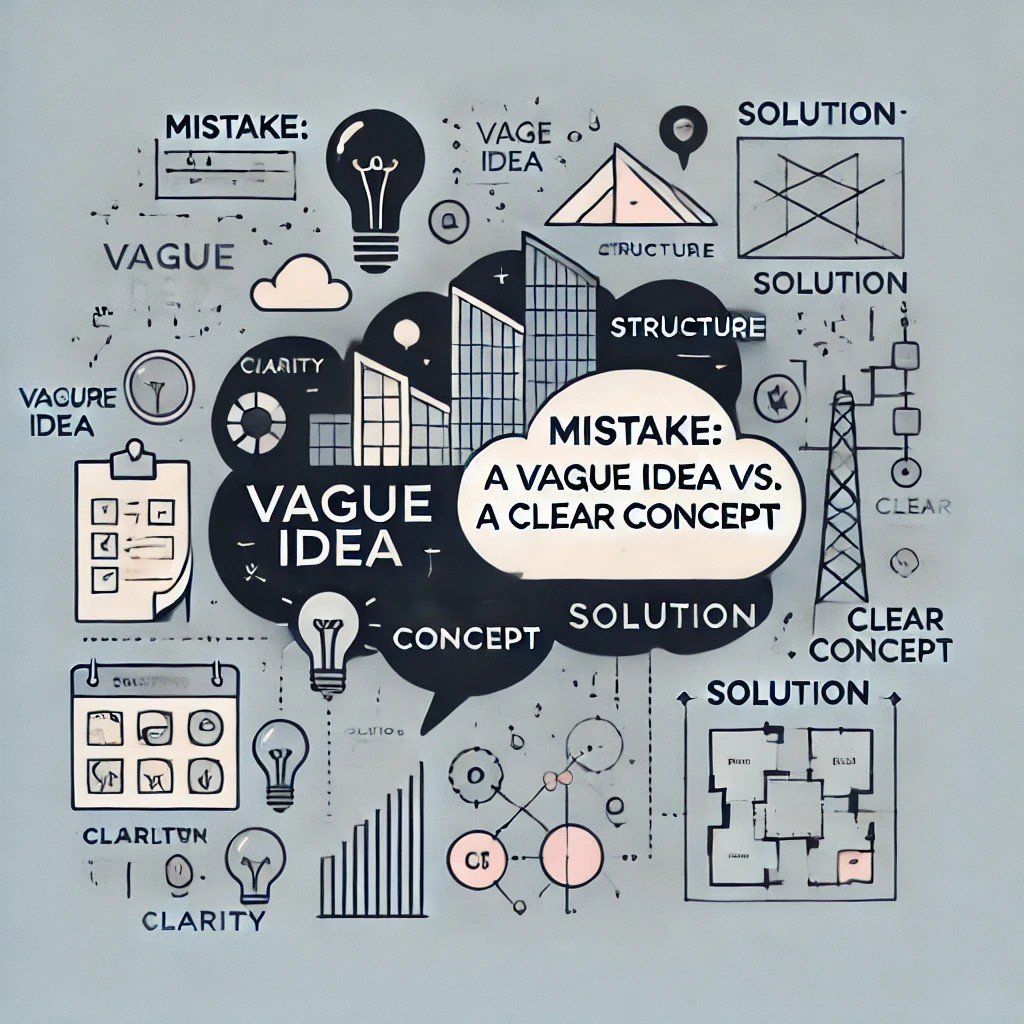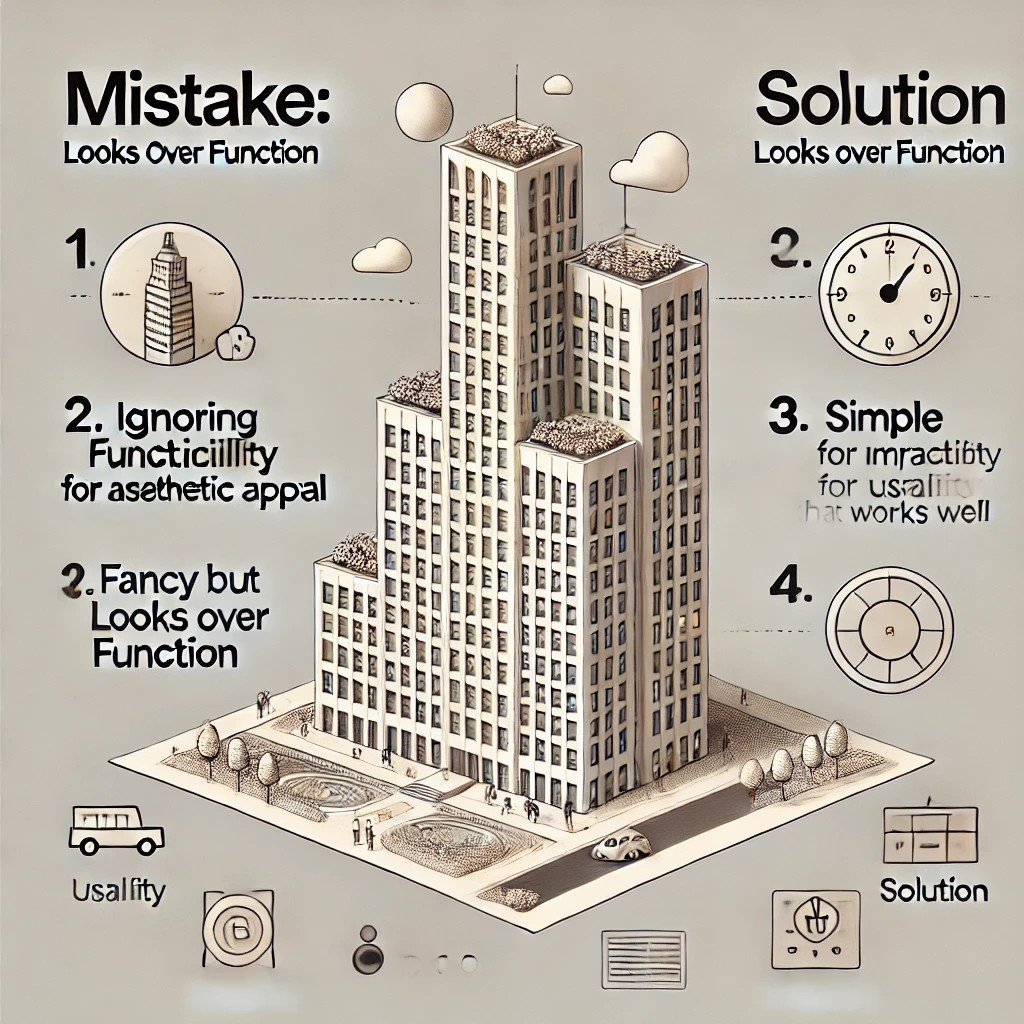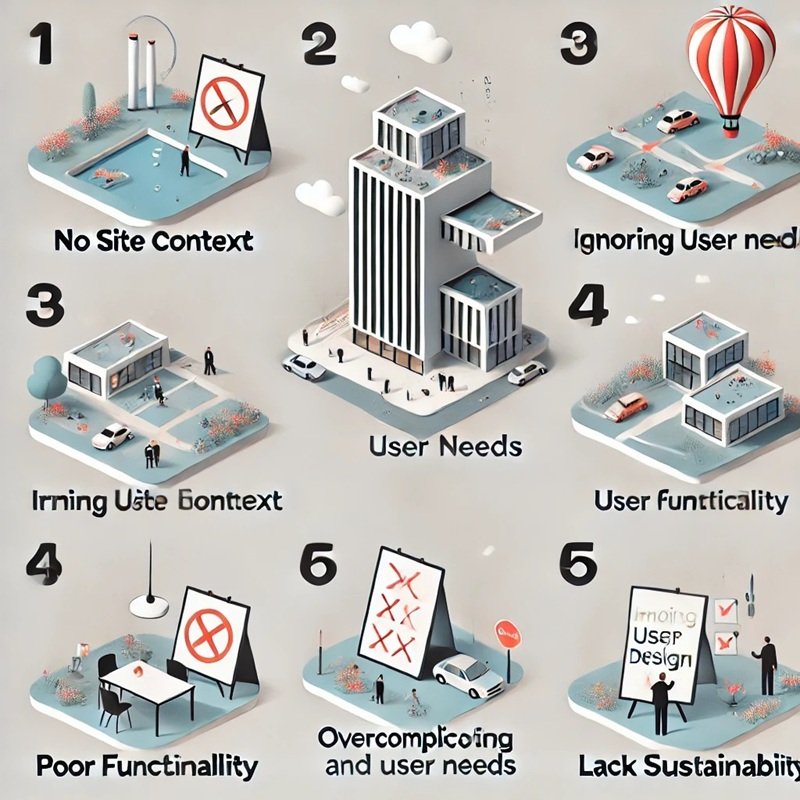Why do some Architectural Design Concepts FAIL?
Developing an architectural concept is the foundation of every great design. It serves as the guiding principle that influences form, function, materiality, and spatial organization. However, many architects—both beginners and experienced professionals—struggle with concept development, often making critical mistakes that can undermine the integrity of a project.
A weak architectural concept can lead to inconsistent designs, impractical solutions, and a lack of clarity in execution. In contrast, a well-developed concept provides a coherent vision that ensures a project is both innovative and functional.
In this article, we’ll explore common mistakes in developing an architectural concept, why some concepts fail, and how to avoid these pitfalls. We will also differentiate between a vague idea and a fully formed concept and discuss how to maintain conceptual consistency throughout a project.
1. Starting Without Research and Contextual Analysis
One of the most frequent mistakes architects make is jumping into design without sufficient research. A concept should be rooted in context—whether it is the site, cultural influences, environmental conditions, or user needs. Failing to analyze these factors often results in superficial designs that lack depth and purpose.

How to Avoid This Mistake:
- Conduct a comprehensive site analysis to understand topography, climate, historical context, and surrounding structures.
- Research cultural, social, and economic factors that may influence the design.
- Study historical and contemporary precedents to learn from successful projects with similar challenges.
- Engage with stakeholders, clients, and users to understand their needs and aspirations.
A strong architectural concept emerges from a deep understanding of its physical, cultural, and functional context, ensuring that the design is both meaningful and responsive.
2. Confusing a Vague Idea with a Fully Formed Concept
A common pitfall is mistaking a loose, undeveloped idea for a structured architectural concept. Architects may have an abstract vision—such as “light and openness” or “organic integration”—but without deeper exploration, these remain shallow notions rather than functional guiding principles.

How to Avoid This Mistake:
- Define your concept clearly in a single, concise statement that captures its essence.
- Use diagrams, models, and sketches to test and refine the concept.
- Ensure that the concept addresses multiple layers of design, including spatial relationships, structure, materiality, and user experience.
- Ask yourself: Can this concept guide every design decision? If not, it needs further refinement.
A vague idea is a starting point, but a fully formed concept provides a clear framework for architectural development.
3. Ignoring Functionality for Aesthetic Appeal
Many architects fall into the trap of prioritizing form over function, resulting in visually striking but impractical buildings. Aesthetic-driven concepts that fail to consider user needs, structural integrity, or environmental performance can lead to inefficient and uncomfortable spaces.

How to Avoid This Mistake:
- Ensure the concept balances aesthetic vision with practical function.
- Test spatial arrangements through programmatic diagrams and circulation studies.
- Consider ergonomics, accessibility, and human behavior when designing spaces.
- Integrate sustainability and efficiency as core components of the concept.
A great architectural concept enhances both beauty and usability, ensuring that a project is both visually compelling and highly functional.
4. Lack of Conceptual Consistency Throughout the Project
An architectural concept should remain cohesive from start to finish. A common mistake is losing focus on the initial idea as the project progresses. This often happens due to external pressures, client modifications, or a lack of discipline in maintaining conceptual integrity.
How to Avoid This Mistake:
- Develop a concept statement that acts as a constant reference throughout the project.
- Use concept-driven design elements consistently in form, materiality, and spatial organization.
- Regularly revisit the concept during key design phases, ensuring all decisions align with the original intent.
- If changes are necessary, adapt the concept rather than abandoning it—refinement is key.
Successful architecture maintains conceptual clarity, ensuring a unified experience from initial sketches to the final built form.
5. Overcomplicating the Concept
While complexity can add richness to a design, some architects make the mistake of creating concepts that are too convoluted, leading to confusion rather than clarity. A concept should be comprehensible and direct, not an overcomplicated theoretical exercise.
How to Avoid This Mistake:
- Aim for clarity and simplicity—a concept should be easily understood by clients, builders, and users.
- Avoid excessive abstraction; ensure the concept is grounded in tangible design principles.
- Use sketches and physical models to communicate ideas effectively.
- Test the concept with colleagues or mentors—if it requires excessive explanation, it may need simplification.
A powerful architectural concept is one that is elegant in its simplicity yet rich in meaning.
6. Ignoring Environmental and Sustainability Factors
Sustainability is no longer optional in contemporary architecture. A concept that ignores climate, energy efficiency, and environmental impact risks becoming outdated or even irresponsible.
How to Avoid This Mistake:
- Integrate passive design strategies such as orientation, natural ventilation, and thermal mass.
- Consider local materials and low-impact construction techniques.
- Design for resilience, anticipating climate challenges such as flooding, heat waves, or seismic activity.
- Explore green technologies like solar panels, rainwater harvesting, and energy-efficient systems.
A sustainable architectural concept is future-proof, ensuring longevity, efficiency, and minimal ecological impact.
7. Failing to Communicate the Concept Effectively
A great architectural concept is meaningless if it cannot be clearly communicated to clients, collaborators, and stakeholders. Poorly presented concepts can lead to misinterpretation, lack of client confidence, and project delays.
How to Avoid This Mistake:
- Develop strong visual representation methods, including sketches, diagrams, and models.
- Use storytelling techniques to explain the rationale behind the concept.
- Tailor presentations to the audience—clients may need more emotionally compelling narratives, while engineers require technical clarity.
- Ensure concept presentations convey both vision and practicality.
The ability to articulate and defend an architectural concept is crucial for its success.
Conclusion: How to Develop a Strong Architectural Concept
Avoiding these common mistakes will help architects create cohesive, innovative, and practical designs. A strong architectural concept is:
- Well-researched and contextually informed
- Clearly defined and fully developed
- Balanced between aesthetics and function
- Consistently applied throughout the project
- Simple yet powerful
- Sustainable and future-proof
- Effectively communicated to all stakeholders
By refining ideas, maintaining conceptual integrity, and integrating sustainable and functional principles, architects can develop concepts that stand the test of time. Whether designing a small residence or a large-scale urban development, a well-executed concept ensures meaningful, enduring, and inspiring architecture.
Stay tuned for more insights on architectural design strategies and conceptual development!
